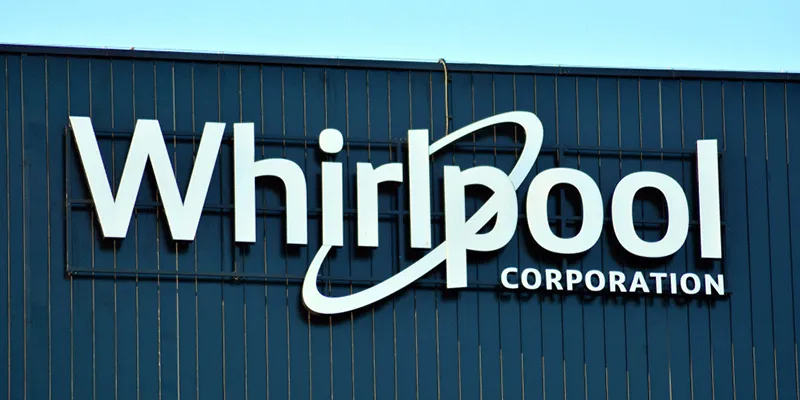Autonomy, Mastery and Purpose – the new Maslow!
What keeps a person happy and motivated? Is it a fancy title or a high salary? Or is it all about find a sense of purpose and mastery in the workplace? Read on...
Janaki Rajagopalan

Tuesday January 22, 2019 , 7 min Read
“We are convinced about your product”, said the investor. “We have understood that your customers love your product and your market is huge. But before we invest $500 million in your company, we want to be convinced that you have the capability to lead your team to build the organization that will be both profitable and sustainable for many years to come. We want to be convinced that you have it in you to transition from entrepreneur to leader.
So this is how we will establish your leadership qualities. We will narrate a story and at the end of the story, we will ask you a question pertaining to the story. If we like your answer, we will meet again to establish more of your leadership qualities. If we don’t like your answer, we will walk away. Each story will be around a particular theme. Our theme today is motivation”.

Motivation puts a spring in our step every morning
Just as sparrows have all but disappeared from the cities, the whole notion of reward and punishment to motivate employees has nearly disappeared from the corporate lexicon. Thanks to some-mind staggering studies by anthropologists and behavioral scientists, it has now been firmly established that what keeps us motivated in our workplaces is not fancy titles, enviable perks or ludicrous salaries but whether the job content generates endorphins in us to lead a peppy and healthy life.
There have been many theories of what helps us wake up each morning with a spring in our step and song on our lips, but I love Daniel Pink’s exposition the most. What keeps us happy and motivated is our sense of mastery, purpose and autonomy, he said. And we say amen to that.
One of us who teaches a course in entrepreneurship has always used the example of the classical artist, M.S. Subbulakshmi to illustrate this. Apparently in her younger days she was completely wayward and unreliable. When she was invited for concerts, you could be sure of her only after she landed there. Even after she met Sadasivam, her waywardness continued. One day he sat her down and said: you know what, let’s get realistic. DK Pattammal’s knowledge of compositions, her rendition of them are way superior to yours. M.L. Vasanthakumari’s technique is way more brilliant than yours. Yet people flock to your concerts to hear you. What do you think is your competence? Your hook as it were? It is your divine voice.
But that is a gift of god which you are squandering away. Tell me, when do you get a standing ovation in your concerts? MS replied that people were moved when she sang bhakti geet or devotional songs, compositions that stoke the fire of divinity. Sadasivam said, if you want to become a lasting name in Carnatic music, you should pursue mastery in bhakti geet. You have a voice that invokes divinity in earnestness, in innocence and in complete abandon. Invoking the divine and carrying your audience with you on this pilgrimage should become your purpose. And you have all the freedom, the autonomy to choose the compositions, the raagas, that lead you to establish your mastery and achieve your purpose!
The rest, they say, is history. MS completely immersed herself in this journey, not only found her god, but designed a divine experience for her listeners and fans.
Whirlpool charted a similar journey in the late nineties to emerge from debilitating stagnation in revenues and growth. Their Chairman Dave Whitwam firmly believed that innovative products was the answer to building customer loyalty and commanding premium prices. However, he went a few steps ahead.
He made innovation the company’s core competency and culture to spur Whirlpool's growth. Consumer-focused creativity became a part of the company's competitive strategy – a strategy that was not limited to a few leaders in the organization, but to every single employee.
It was a multi-pronged approach to motivate the organization as a whole to adopt the attitude and culture of innovation. A leadership and strategic competency development function was created and Nancy T Snyder who was VP then, spearheaded this vision. A core team of 75 was trained on strategic aspects of innovation, and 600 more as mentors to support innovation. But Snyder didn’t stop there. She immersed every member of their global workforce into the innovation juggernaut at the same time.
Whirlpool built an innovation portal that gave their employees all over the world access to an array of innovation tools and data on the company’s global innovation pipeline. Information technology was redesigned and management processes were re-engineered to accelerate the ‘idea-to-final product’ innovation chain. A host of low-cost ‘startlets’ replaced the few big projects. A 2-step graphing tool called the I-box provided all employees the opportunity to demonstrate the market viability of their proposals backed by market research. And monthly I-Board meetings evaluated and funded new proposals that enhanced Whirlpool's existing brands.

Whirlpool managed to mesh autonomy, mastery and purpose in their workforce
The payback was enormous. Between 2001 and 2002 the knowledge management site registered ~300,000 hits per month. By 2005, revenues from innovative products soared to nearly US$800 million from US$10 million in 2001 (this would later rise to $1 billion in 2006, $2.7 billion in 2008 and $4 billion in 2008). Share prices doubled. By April 2006, Whirlpool had a pipeline of 568 innovation projects under development – 195 of these being scaled for commercial launch.
The trend continues to this day. In 2017 alone, Whirlpool had invested approximately $680 million in capital expenditures to fund innovation, and introduced more than 100 new products throughout the world. They have committed to further accelerating their pace of innovation in the areas of emerging connected technologies.
And so Mr. Entrepreneur, here is my poser. How did Whirlpool mesh autonomy, mastery and purpose into motivating their workforce to become a powerhouse of innovation and corporate entrepreneurship?
The entrepreneur’s response was one of clear conviction.
Without a doubt, said the entrepreneur, Whirlpool has been a brilliant use case of not just articulating a change vision, but flawlessly actualizing the blue print by motivating its employees, providing the infrastructure and mentoring them to deliver that vision.
Whirpool did not merely innovate, they created an entirely new way to lead and motivate. Whitwam’s goal of ‘innovation from everyone, everywhere’ was a challenge that encompassed and gripped the entire organization – through staunch leadership commitment to empower their people to own their success.
Appointing Nancy Snyder as the innovation czar demonstrated leadership commitment. New processes for product development, knowledge management, financial accounting, resource allocation and project reviews reinforced this belief.
Above all, linking their knowledge management system to their global strategy provided every employee a powerful tool for proficiency in enabling innovation. Opportunity for mastery was unplugged in myriad ways - courses, innovation portals, training and mentorship.
Whirlpool, said the entrepreneur, internally marketed innovation to each of their 60,000+ employees at that time. Every employee could discover and choose their purpose to innovate – the power and autonomy to do so came into their hands. But there was accountability of ownership too – they had to find the compelling customer proposition, research for viability and present for validation to secure approval and funding. And the metrics to track and link innovation inputs, throughputs and outputs were intelligently crafted for relevance and openness to invite total trust.
Every Whirlpool employee thus became an entrepreneur like me, concluded the entrepreneur. They created and delivered unique customer value by bringing their full force of initiative, imagination and enthusiasm. I am sure motivation must have coursed through their veins.
That was an excellent response, acknowledged the investor. We will meet again next week!
So readers, your turn now. What is your specific alchemy to motivate your people and stakeholders?
Mail it to us before <date> to [email protected]
We will pick one winner, publish that story on 29th Dec and you will get a chance to have a free half-hour mentoring session with Nandini Vaidyanathan.






